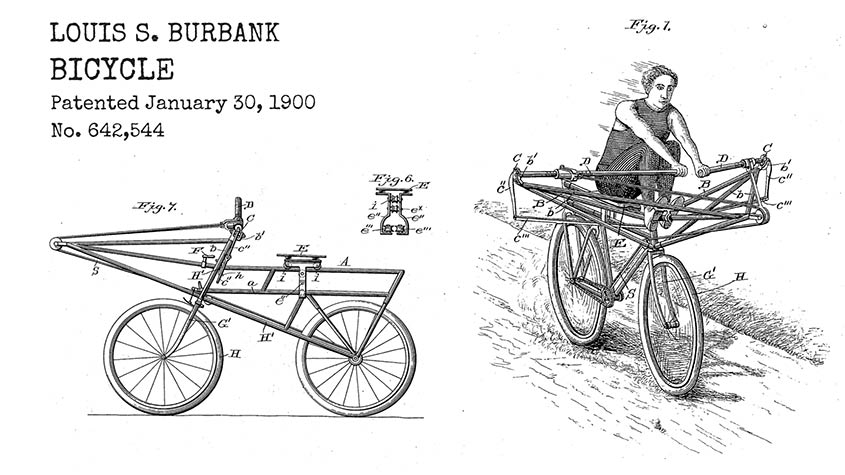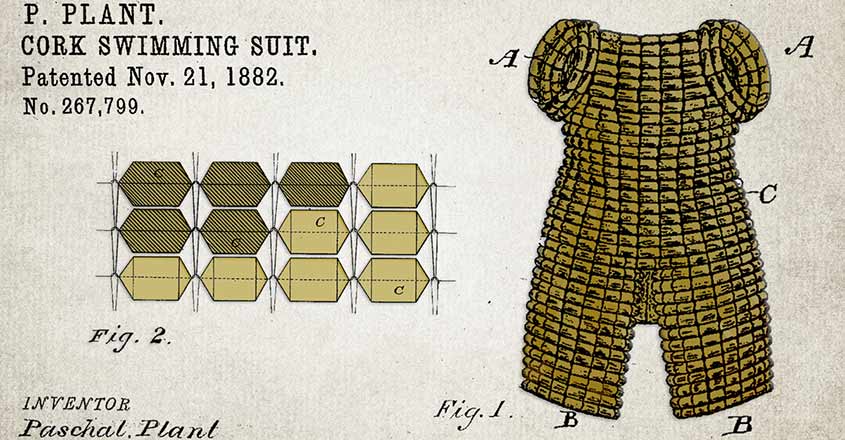2020 Patent Picks – Weird and Wonderful
If ever proof were needed that innovation knows no bounds, look no further than our list of out-of-the-ordinary patents.
Bicycle (1900)

This bicycle, patented by Louis S. Burbank in 1900, allows you to exercise both your legs and arms while cycling. "The object of the invention is to provide means whereby one may enjoy with a bicycle exercise like that of rowing with a pair of sculls" – the patent explains. Looks fun but we are not sure how the brakes work!
Ladder-gripping Attachment for Shoes (1913)

Patented by Edmond Dennis in 1913, this invention makes it possible to stand on a ladder or other support "even when the body of the wearer is inverted and extended downward from the support". Not recommended for people with fear of heights.
Animal Track Footwear Soles (1968)

Walking with a purpose: With these soles, patented by Philip E. McMorrow in 1968, you can lay "simulated animal tracks for either educational purposes or mere amusement". "Because of the continuous depletion of the wildlife population, it is becoming increasingly difficult to train wildlife experts, conservationists, forest rangers, Boy Scouts and the like in the art of tracking various wild animals" – the inventor stated in his patent application. Where can we get a pair?
Object-dispensing Wearing Apparel (1978)

Don't be a fashion victim in 2021 with this "object-dispensing wearing apparel". Its inventor, Frank R. Nemirofsky, regretted that "novelty garments are totally passive; they merely present well-known personalities, illustrations derived from popular motion pictures, cute, witty phrases, and advertising logos". So, in 1978, he patented a pocket that can hold whatever object you like – gumballs anyone? –, and "provides a novel form of interaction between the viewer and wearer not heretofore realized."
Wearable Table (1995)

Eating on the go doesn't have to be uncomfortable. Made for situations "where free-standing tables are impractical", this wearable table with a rigid tray lets you eat, write and more – wherever you are. Bon appétit!
Fork with Timer (1995)

Is eating more slowly one of your New Year’s resolutions? Nicole M. Dubus and Susan Springfield patented this "fork with a timer" in 1995. After an elapsed period of time, the fork provides a cue to its user that another bite of food using the fork may be taken. Enjoy your meal – slowly!


